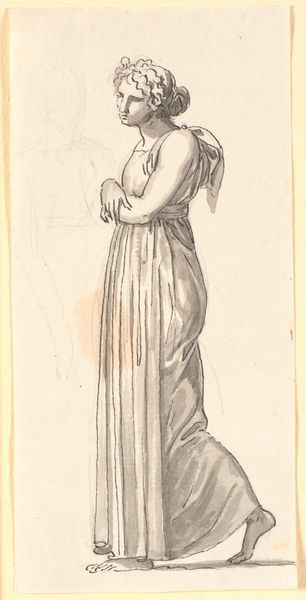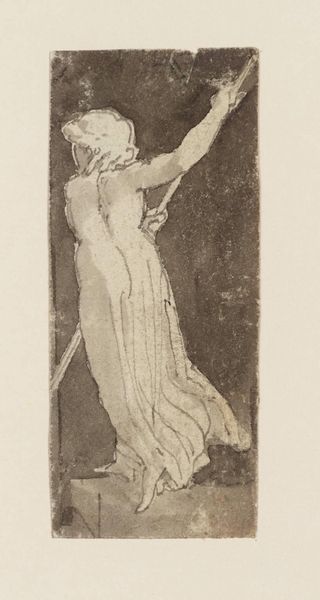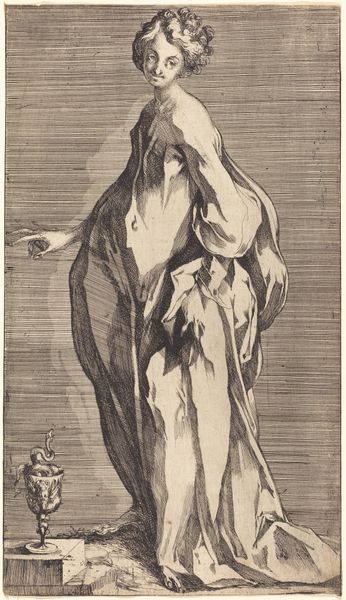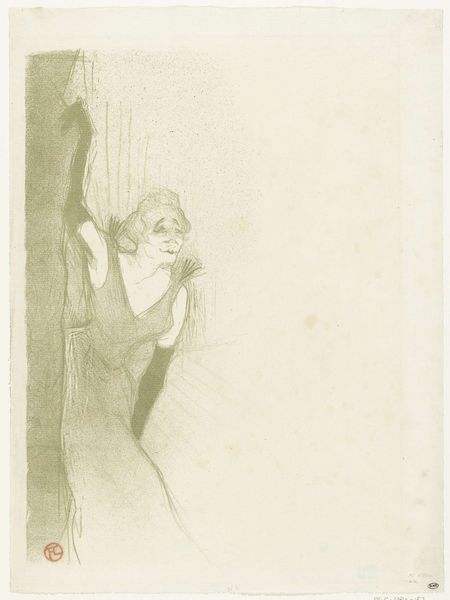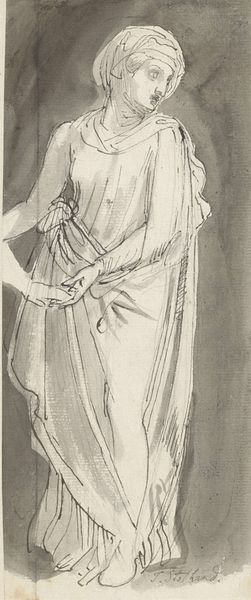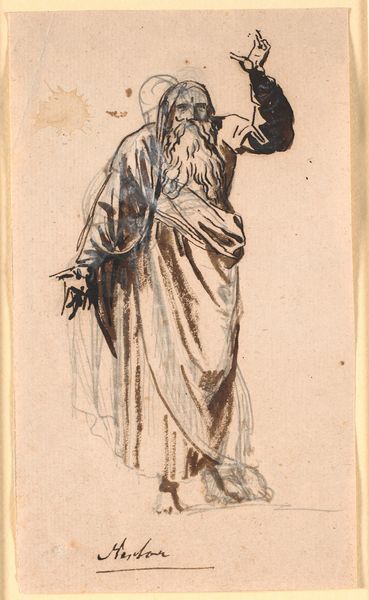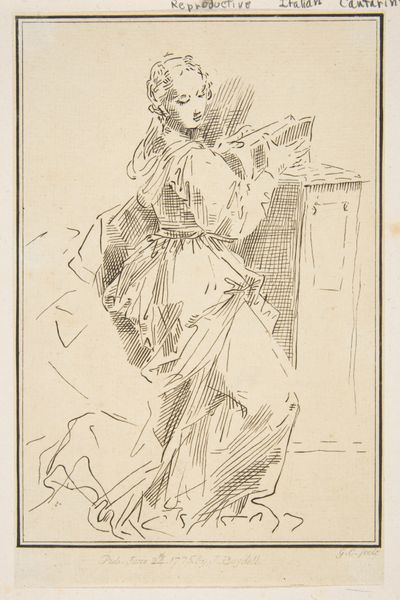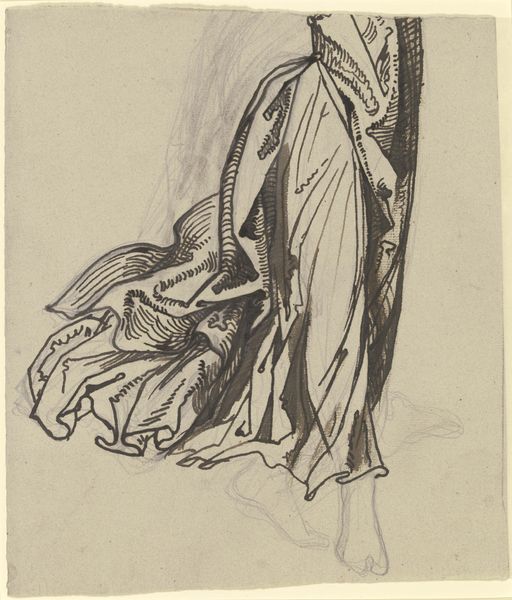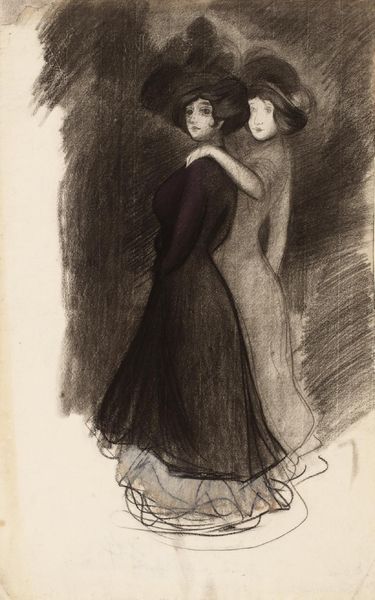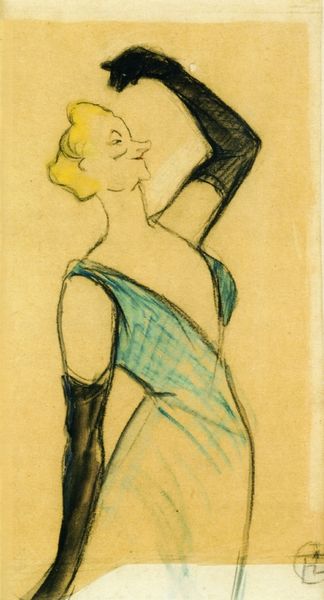
Copyright: Public Domain: Artvee
Editor: This is George Romney's "A Study of Miranda for 'The Tempest'," dating from around 1786. It's an ink and pencil drawing on paper. I find it striking how the figure seems caught between darkness and light, her upward gaze filled with a mixture of hope and fear. How do you interpret this work? Curator: Well, it’s impossible to view this without considering the theatrical and literary contexts shaping late 18th-century society. Romney's Miranda, inspired by Shakespeare’s "The Tempest," represents a young woman on the cusp of liberation and self-discovery but also deeply embedded within a patriarchal structure. Consider her pose; she reaches upwards, yearning, yet her connection to that looming darkness seems almost inextricable. Do you see how this might relate to the era’s shifting views on women’s roles and intellectual potential? Editor: I hadn't thought about it that way, but it makes sense. Her upward reach could be seen as a desire for knowledge or agency, but she's still framed by this ambiguous, almost oppressive darkness. Is the darkness then suggestive of the societal constraints placed upon women, even within the ostensibly enlightened Romantic period? Curator: Precisely! We must read her as a figure caught in a transitional moment. Miranda embodies the anxieties and aspirations surrounding female identity during a time of great social and intellectual upheaval. Furthermore, this sketch also reflects on the colonialist themes present within “The Tempest”, a perspective often overlooked when examining this narrative. Her innocence is also her entrapment in some sense, since she will only come to understand her identity after she confronts it. Editor: That’s fascinating. I now see the piece as less of a straightforward depiction and more as a commentary on the complex realities facing women of the time, linked to a reflection about post-colonial narratives of self discovery. Thanks for sharing your perspective! Curator: Indeed, it's through these layers of analysis that we can appreciate the full power of art, allowing us to delve more deeply into social issues and the intersectional perspectives from that era, and reflect upon the relevance for contemporary viewers as well.
Comments
No comments
Be the first to comment and join the conversation on the ultimate creative platform.
